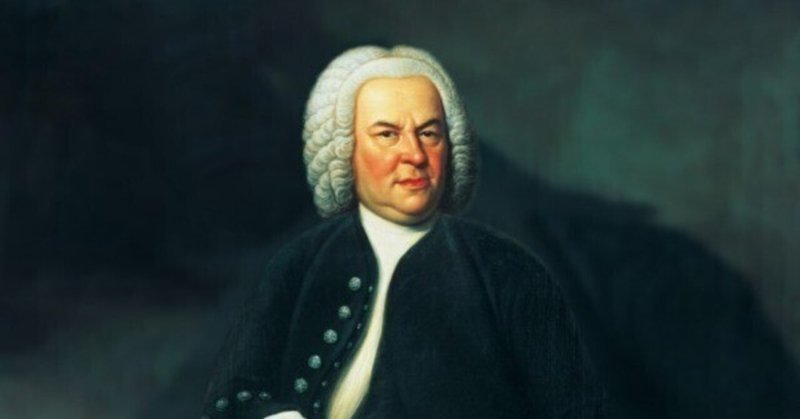
バッハの最後の宗教曲、ミサ曲ロ短調
この作品は、バッハが生涯にわたって作曲したラテン語のミサ曲の中で唯一、全曲を完成させたもので、バッハの最高傑作の一つと言われています。
バッハは、カトリックのザクセン選帝侯に献呈するために、キリエとグロリアを作曲しました。その後、他の部分を追加して、ミサ曲としてまとめました。
この作品は、バッハの宗教音楽の技法や表現力のすべてを集約したもので、フーガやカノンなどの対位法や、様々な楽器の組み合わせや効果などが見事に用いられています。
また、この作品は、カトリックのミサの形式に沿っていながら、ルター派の信仰の要素も含んでいます。例えば、サンクトゥスの歌詞では、カトリックの「あなたの光栄」をルター派の「彼の光栄」に変えています。
このように、この作品は、バッハの信仰心や音楽性の高さを示す、普遍的な名曲だと言えるでしょう。
ミサ曲ロ短調は、バッハが生涯を通して作曲したラテン語のミサ曲で、キリエ、グロリア、クレド、サンクトゥス、ホサンナ、ベネディクトゥス、アニュス・デイ、ドナ・ノビス・パーチェムの8つの部分からなります。
全編に崇高な宗教的感情があふれていて、この曲にバッハのすべてがあるといっても過言ではないほどです。
この作品は、カール・リヒターの指揮による録音が有名で、1969年にミュンヘン・バッハ管弦楽団と合唱団とともに演奏されました。
この動画は、バッハの音楽の荘厳さや壮大さを表現するものとして、多くの人に愛されています。
あふれるようにみずみずしい演奏です。
リヒターには1961年のスタジオ録音もあり、それはきわめて峻厳な名演奏でした。
これはそのスタジオ録音ほどの芯の強さはあまり感じられませんが、全篇にわたって、表情がゆたかであたたかな、人間愛にみちた音楽がつくられています。
バッハの音楽の荘厳さや壮大さを表現するものとして、多くの人に愛されていることがわかります。
リヒターは、バッハの作品に精通したオルガン奏者、チェンバロ奏者、指揮者でした。彼は、バッハの音楽を厳格に解釈し、忠実に再現することを目指していました。
この録音は、1969年にミュンヘンで行われたライブ録音で、リヒターが指揮するミュンヘン・バッハ管弦楽団と合唱団、そして優秀な独唱者たちが参加しています。
この録音は、リヒターのバッハ解釈の特徴である、緊張感や厳格さ、鮮やかさなどが感じられます。
しかし、同時に、この録音は、リヒターの柔軟さや温かさ、人間愛なども表現しています。
リヒターは、この日だけに許された「即興の時」であったのでしょうか。
リヒターの自由な飛翔は、バッハ演奏家に対して大きな影響を与えたようです。
リヒターの張り詰めた音楽作り、彼を信奉する合唱団員たち、最上の歌唱や演奏で応える独唱者たち、オーケストラの協調ぶりは強く心に残ります。
カール・リヒターは、20世紀を代表するオルガン奏者、チェンバロ奏者、指揮者の一人でした。
彼はドイツのプラウエンに生まれ、ライプツィヒ音楽院でオルガンとチェンバロを学びました。彼は特にバッハの作品に優れた解釈を示し、多くの録音を残しました。
また、ミュンヘン・バッハ管弦楽団やミュンヘン・バッハ合唱団を指揮し、オルガンやチェンバロの独奏も行いました。
彼は世界中で演奏旅行を行い、日本でも何度も公演しました。
働き盛りに心臓発作で亡くなりましたが、その後も彼の演奏は多くの人々に愛され続けています。

Bach's last sacred piece, Mass in B minor
This work is the only complete Latin mass that Bach composed during his lifetime, and is said to be one of his greatest masterpieces.
Bach composed Kyrie and Gloria as a dedication to the Catholic Elector of Saxony. He then added other parts and put it together as a mass.
This work brings together all of the techniques and expressive power of Bach's sacred music, making excellent use of counterpoint such as fugues and canons, as well as the combinations and effects of various instruments.
The work also includes elements of the Lutheran faith, while following the format of the Catholic Mass. For example, the lyrics of Sanctus change the Catholic "thy honor" to the Lutheran "his honor."
In this way, this work can be said to be a universal masterpiece that shows Bach's high level of piety and musicality.
Mass in B minor is a Latin mass that Bach composed throughout his life, consisting of eight parts: Kyrie, Gloria, Credo, Sanctus, Hosanna, Benedictus, Agnus Dei, and Dona Nobis Percem. .
The entire piece is overflowing with sublime religious emotions, and it would be no exaggeration to say that this piece has everything Bach has to offer.
This work is best known for its recording conducted by Karl Richter, performed with the Munich Bach Orchestra and Chorus in 1969.This video is loved by many people as it expresses the majesty and grandeur of Bach's music.
It's an overflowing and fresh performance.
Richter also had a studio recording made in 1961, and it was an extremely rigorous masterpiece.
This doesn't feel as strong as the studio recording, but the music throughout the piece is expressive, warm, and full of human love.
You can see that it is loved by many people as it expresses the majesty and grandeur of Bach's music. music
Richter was an organist, harpsichordist, and conductor well versed in Bach's works. He aimed to rigorously interpret and faithfully reproduce Bach's music.
This recording was made live in Munich in 1969, and features the Munich Bach Orchestra and choir conducted by Richter, as well as excellent soloists.
This recording conveys the tension, rigor, and vividness that are characteristic of Richter's interpretation of Bach.
However, this recording also expresses Richter's flexibility, warmth, and love for humanity.
Was it a ``moment of improvisation'' that Richter was allowed to have only on this day?
Richter's free flight seems to have had a great influence on Bach musicians.
Richter's intense music-making, the choir members who believe in him, the soloists who respond with their best singing and playing, and the coordination of the orchestra leave a strong impression on me.
Karl Richter was one of the leading organists, harpsichordists, and conductors of the 20th century.
He was born in Plauen, Germany, and studied organ and harpsichord at the Leipzig Conservatory. He was particularly good at interpreting Bach's works, and left many recordings.
He also conducted the Munich Bach Orchestra and the Munich Bach Choir, and played organ and harpsichord solos.
He toured around the world and performed in Japan many times.
He died of a heart attack when he was in the prime of his career, but his performances continue to be loved by many people.

よろしければサポートお願いします! いただいたサポートはクリエイターとしての活動費に使わせていただきます!
